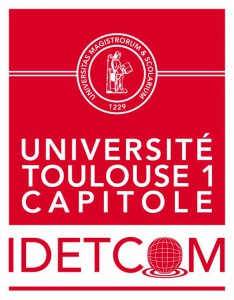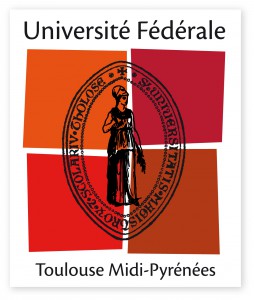Museum marks: a public space revisited?
Call for papers. International symposium
Toulouse, the 2 and 3 June 2016
From a classic entrepreneurial context, brands now know a continuous expansion in the public sector and particularly in the Museum field.
The creation of an agency dedicated to the accompaniment of the intangible heritage of the State policies is attested.
In 2006, the Lévy-Jouyet report provided the premises of this optimization policy, specifically designating museums such as spearheads of these cultural marks.
Driven by international institutions, the establishment of a branch of the Museum of the Louvre and the Guggenheim in Abu Dhabi Foundation is an illustration.
Deposits of marks by museums are becoming widespread.
This Conference aims to analyze how museums take ownership of brands, how they use the mark to define a strategy, what values they rely to build, renew their identity, what imaginary they mobilize to organize their protection, enhance expertise, develop their resources.
Museums are a strong identity forged by history – and french museums in particular due to their revolutionary origins – and powerful values, in the first rank of which universalism: induces the use of marks a paradigm shift?
The answers to these questions must be based on a resolutely multidisciplinary approach based on law, information and communication sciences, history, economics, management and sociology.
They will be articulated around 4 axes.
Axis 1: Norms and institutions
We have to measure how to coexist within the same institutions, two logical applying two types of protection: that relating to the mark, that relating to the public service.
This duality implies also to evaluate the complementarities, even contradictions between different objectives.
The promotion and the protection of the mark and recovery requirements and the development of own resources may be inconsistent with the founding principles of the Museum as institution, for example, the principle of inalienability of collections.
Axis 2: Mediation (s) and digital
The semiological approach is to analyze the different brands, to explore their codes, identify the imaginary fields invested by these Museum marks and their expression system.
The question of the public remains here cardinale: the use of the mark exacerbates the tension between museological evaluation and marketing approach?
Museums are now deploying digital communication strategies.
Their presence on social networks generate the problem of e-reputation of museums and their digital identity.
These elements deserve to be analysed through empirical studies to be in tension with the concept of brand.
Digital communication is at the service of the traditional missions of museums or is it an avatar of brand communication?
Digital communication to reach new audiences and/or reinforce the logic of partnerships and existing collaborations?
Axis 3: Territory (s) and competitiveness
Decentralization processes participate jointly a logic of restructuring of the local territories — such as the metropolis – and a questioning of traditional administrative joints in favour a communicational concern and international visibility layout.
How, for example, the Museum marks give see the territory?
By their architecture, their mediated by their logo?
Example of LaM (Lille Metropole Modern Art), the Mac/Val (Musée d'art contemporain du Val-de-Marne), by the identification of the territory on the basis of an artist, as the Musée Soulages in Rodez.
How complement strategies brought by the territorial marks, (OnlyLyon / Musée des Confluences).
How the competitiveness of the territories located to articulate with the Museum marks designed as a factor of attractiveness?
Axis 4: Administration and Management
The trademark question jointly des sciences de gestion, who observe the continuous extension of managerial tools in the field of the non-profit sector: universities, hospitals, centres of research, or non-profit, such as opera houses cultural institutions, libraries, theatres, festivals, monuments or museums.
However, in the commercial sector, the brand – expression values and positioning that the company wants to associate with its products – serves as both of instrument of differentiation and benchmark for the consumer, which may seem less essential in the cultural sector where each institution remains unique.
A reflection in terms of brand can bring greater coherence to the actions of communication of museum institutions and enable them better to assert their specific positioning.
Scientific Committee
- Robert Boure, Université Paul Sabatier Toulouse
- Nikolay Burov, Isaac's cathedral, Saint Petersburg
- Philippe Chantepie, Ministry of Culture and Communication, Chair Innovation and Regulation of digital services, Ecole Polytechnique
- Marie Cornu, CNRS, Université de Poitiers
- Martine Corral-Regourd, Université Toulouse 1 Capitole
- Jean Davallon, University of Avignon and the Vaucluse countries
- Bernadette Dufrêne, University Paris 8
- José Luis Piñuel Raigada, Universidad Complutense Madrid
- Jean-Marie Pontier, Université Aix-Marseille
- Dominique AK, Université Paris 1 Panthéon-Sorbonne
- Jean-Michel Tobelem, Institute of studies and research Option Culture, University Paris 1 Panthéon-Sorbonne
- Geneviève Vidal, University Paris 13
- Margot Wallace, Columbia College Chicago
Organizing Committee
- Christophe Alcantara
- Martine Corral-Regourd
- Didier Guignard
- Jérôme Ferret
- Sylvie Laval
- Lucie Sourzat
- Nicolas Peyre
- Nicolas Tilli
All members of Idetcom, Université Toulouse 1 Capitole.
Submission and evaluation of communications
Please send your proposals for papers (title, problem, theoretical framework, methodology, selected axis) to Martine.Corral@ut-capitole.fr, Sylvie.Laval@ut-capitole.fr before 20 December 2015 not exceeding 3000 signs.
They will be reviewed according to the usual procedures and responses will be communicated to the authors before February 15, 2016.
The papers will be published in the form of acts.
The Symposium languages: french, English.
Website.


Laisser un commentaire